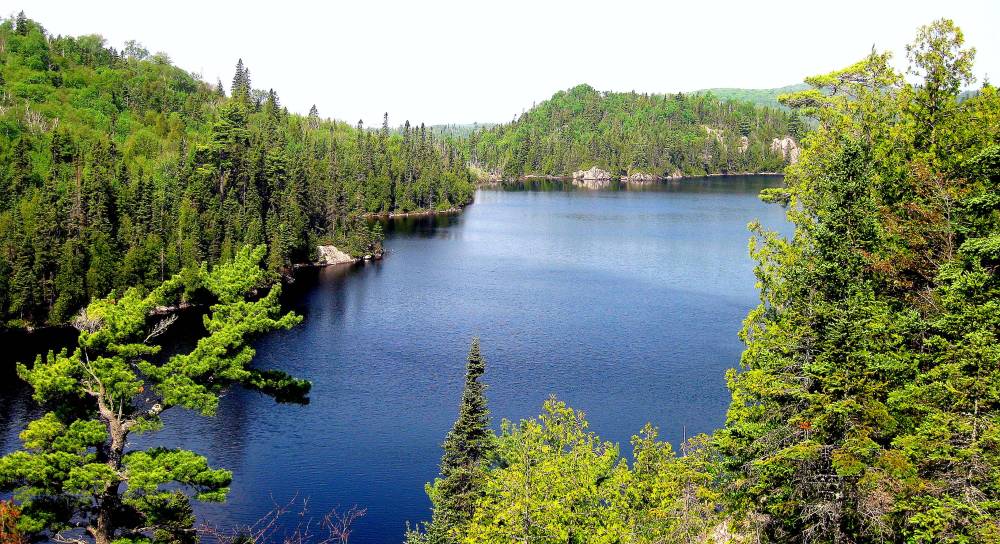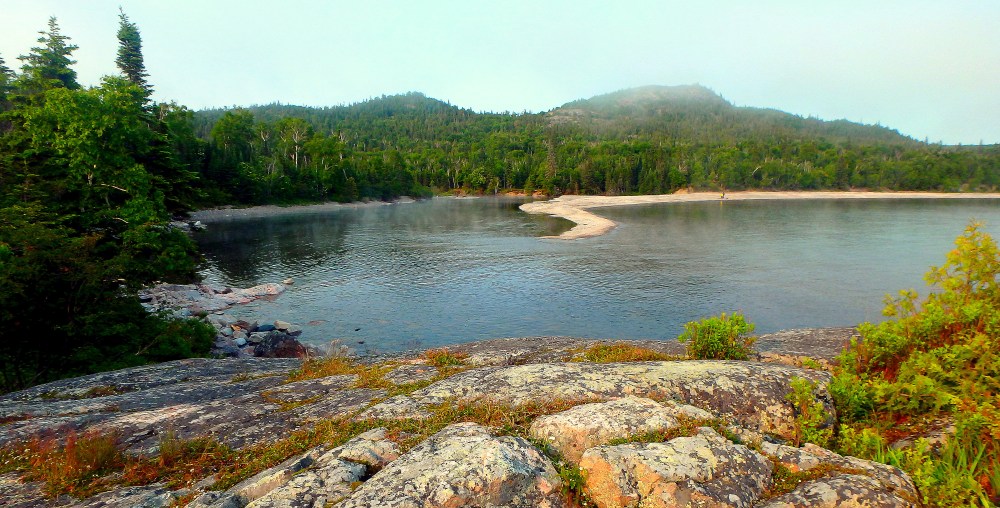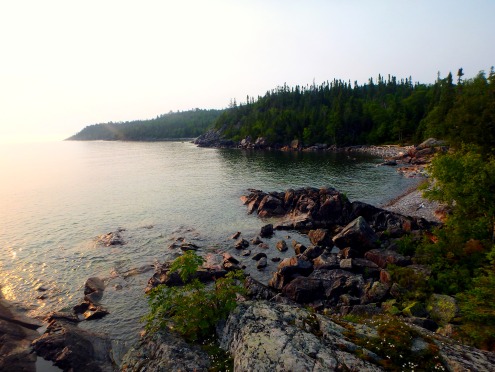The Coastal Trail in 14 Hours
A gruelling 65-kilometre hike in one day? No problem. At least, not for Viktoria Koskenoja and her husband Sam Holcomb, who hiked – or ran – the legendary Lake Superior Provincial Park Coastal Trail in only 14 hours. The Coastal Trail, infamously known for its rugged terrain, boulder beaches, vast mountains, rock crevices, and slippery slopes, provides access to some of Lake Superior’s most rugged but also most pristine beaches. Access to such hidden gems, however, is no easy hike through the woods, but rather requires great skill and preparation. Rated extremely difficult, and often impassible due to adverse weather, the Coastal Trail takes the average experienced hiker five to seven days to complete. However, the dynamic duo of Koskenoja and Holcomb now have bragging rights after having completed the arduous trek in less than one day, one of the fastest treks recorded in Lake Superior Provincial Park history!
Koskenoja and Holcomb are seasoned athletes. Koskenoja, originally from Sault Ste. Marie, Ontario, and her husband Holcomb, from Homer, Michigan, are currently residing in Boston, Massachusetts, while she is working at Massachusetts General Hospital in the Harvard-Affiliated Emergency Medical Residency program. As athletes, Koskenoja is best known for her speed on both cross-country running tracks and on Nordic skis. Holcomb, is a former Green Beret with the United States Army. He is currently employed as a carpenter. Both are frequent marathoners.
Together, they first conceptualized the idea of running the Coastal Trail after watching a YouTube video of a trio hike the rugged trail in one shot, completing the course in 27 hours, 47 minutes. It took them three attempts to master what they considered to be a “monster” hike.

Viktoria Koskenoja and Sam Holcomb race the clock to complete the Coastal Trail in less than one day. Image supplied by Marko Koskenoja.
The duo were able to successfully complete their goal on their first attempt with the help of a support services team, comprised of Koskenoja’s father (Ari Koskenoja), Holcomb’s parents (Alice and Brent Holcomb), as well as Koskenoja’s aunt and uncle (Marko and Ruth Koskenoja). They met the runners at various checkpoints throughout the trail, including at the Baldhead River, Katherine Cove, the Barrett River, and finally Sinclair Cove – where I first saw them and took interest in their amazing feat – before crossing the finish line and enjoying an evening under the stars and Milky Way at Agawa Bay.
The 14-hour journey got underway at 4:30am. Koskenoja’s aunt and uncle secured interior backcountry campsites for the adventure enthusiasts at Chalfant Cove, the most northern tip of the Coastal Trail, seven kilometres north of Gargantua. The group slept at Chalfant Cove on Friday evening (September 4th), waking up at 4:00am, prior to sunrise, to begin their agonizing trip southward. The two sailed through the most difficult portion of the trail, the stretch south of Gargantua, which requires plenty of rock scaling and scrambling. Luckily, Lake Superior lay calm for their journey on Saturday, leaving the rocks untouched by water and not enveloped by high tides. Had this not been the case, the duo would have made much slower time, or their trek may have had to have been rescheduled. While the wind and Superior cooperated, the sun did beat down relentlessly, and temperatures reached a scorching 29 degrees Celsius, with humidex values rising to a balmy 35 degrees.
Koskenoja and Holcomb reached their first checkpoint at 27 kilometres in at the Baldhead River, accessible via the Orphan Lake Trail. They were greeted by two members of their support group, Holcomb’s parents, who were informed that Koskenoja had pulled her hamstring muscle, causing their pace to slow. Once they reached Katherine Cove, where they were reunited for the first time with their entire support group, Koskenoja was given trekking poles to aid her injury and relieve some of the pain caused in her upper leg. At Katherine Cove, the duo refuelled, eating high-energy and high-protein snacks, and drank lemonade. They also refilled their Camelbacks, the only item the two carried with them.

Viktoria Koskenoja and Sam Holcomb embrace after completing the Coastal Trail in 14 hours. Image supplied by Marko Koskenoja.
Impressively, Koskenoja endured the pain, and the two crossed the finish line at the Agawa Bay Visitor’s Centre at 6:30pm, almost two full hours ahead of sunset. They enjoyed an evening of celebration and rest. Their family support group had prepared a mighty Pickerel fish fry with fresh cut fries, home grown vegetables, hummus, corn bread muffins, and apply butter. Unfortunately, in addition to her pulled hamstring, Koskenoja was now also nursing painful blisters from non-stop foot usage.
The two travelled back to Boston first thing Sunday morning. Although their time in Lake Superior Provincial Park was short lived – just over 48 hours – they left an impact on all those they met along their journey on the Coastal Trail. Other hikers and onlookers couldn’t help but celebrate their success as they passed by, checkpoint after checkpoint.
In June, the husband and wife duo will be relocating to Marquette, Michigan, where they will continue to explore the great outdoors.
The North Junction would like to congratulate both Koskenoja and Holcomb on their successful journey on the Coastal Trail!
Writer’s note: Please do not attempt the Coastal Trail in one shot without a proper support group, supervision, and unless you are a seasoned hiker in top physical shape.













